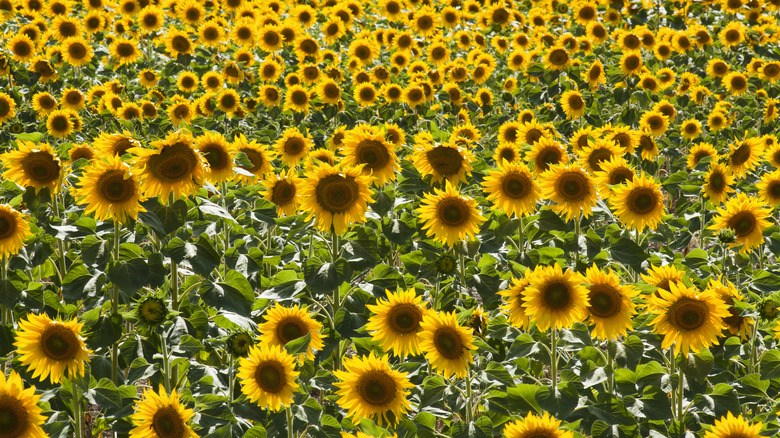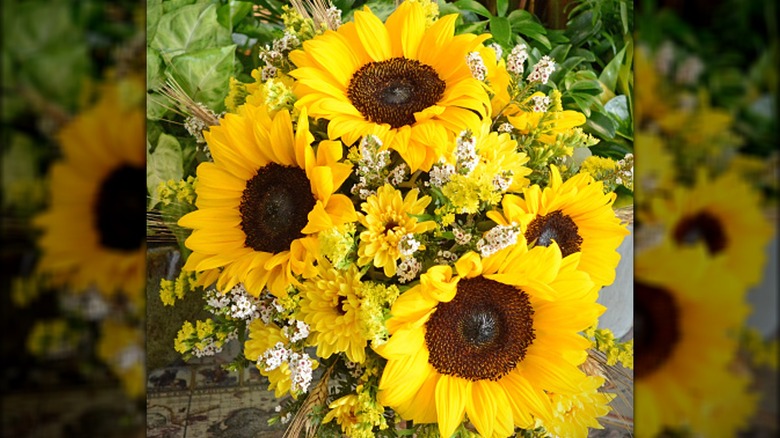Why Beautiful Wild Sunflowers Are Actually Considered Weeds
Fields of sunflowers (Helianthus annuus) are nearly as synonymous with fall as pumpkins (and their namesake spiced lattes). From photo backdrops to Martha Stewart-approved Thanksgiving centerpieces, autumn could never feel like autumn without sunflowers. You might be surprised, then, to learn that common sunflowers are actually considered weeds in several regions of their native North America. This is due to their aggressive spread and robust root systems, which can compete for resources with cultivated plants in fields or orchards.
While these bold, giant wildflowers might add a beautiful and majestic aesthetic to any fall scene, they are still invasive in nature and very difficult to eliminate once they've begun to spread. If you're a sunflower lover, you don't have to give up your favorite flower. Just be sure to educate yourself on the potential consequences of uncontrolled common sunflowers and intentionally select only cultivated varieties for planting in your garden and around your yard.
What makes a weed? Cultivated vs. uncultivated sunflowers
All plants need resources to survive, grow, and thrive. These resources typically include sunlight, water, space, and soil nutrients. Different plants require different ratios of these resources, but no plant can survive without them. Since humans are the species currently at the top of the earth's food chain, we decide which plants are desirable as food crops or ornamental flowers.
Plants that spontaneously grow in areas that humans have dedicated to cultivated fields, orchards, or gardens compete with those that have been intentionally planted for resources. This is what makes them considered weeds. The more aggressively one of the non-cultivated (wild) plants spreads and injures other plants via competition, the more noxious the weed is considered. The common sunflower fits into this category, but cultivated varieties can be planted and enjoyed without spreading aggressively or overtaking other plant life. Some varieties are even pollenless, meaning they don't produce seeds at all and will only grow where they are planted with no risk of spreading.
Popular cultivated sunflower varieties to consider
There are roughly 70 different species of sunflower, including over 20 pollenless varieties. If you wish to grow sunflowers mostly to serve as cut flowers for your gorgeous fall centerpieces and indoor or outdoor decorations, a pollenless variety may be ideal. The lack of pollen and seeds not only keeps these varieties from spreading; but also eliminates the common frustration of pollen staining that comes with traditional cut sunflowers. ProCut cultivators are popular single-stem pollenless sunflower varieties that span a wide array of colors, sizes, and shapes. Try ProCut 'White,' 'Orange,' 'Peach,' or 'Red.'
If you prefer to leave your sunflowers standing in your garden or yard to help feed local pollinators and wildlife, you'll want to look for a variety that isn't quite as prolific as common sunflower but does produce pollen and seeds. Try 'Italian White,' or 'Cucumber Leaf,' or 'Ice Cream' varieties, depending on the particular aesthetic you're trying to achieve in your unique outdoor living space.


